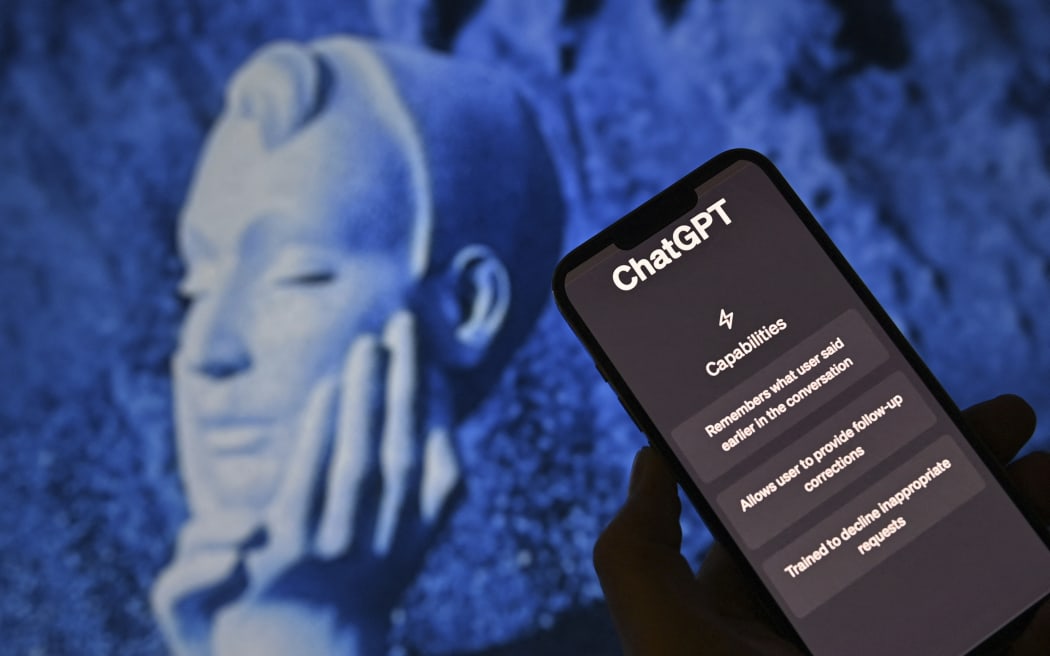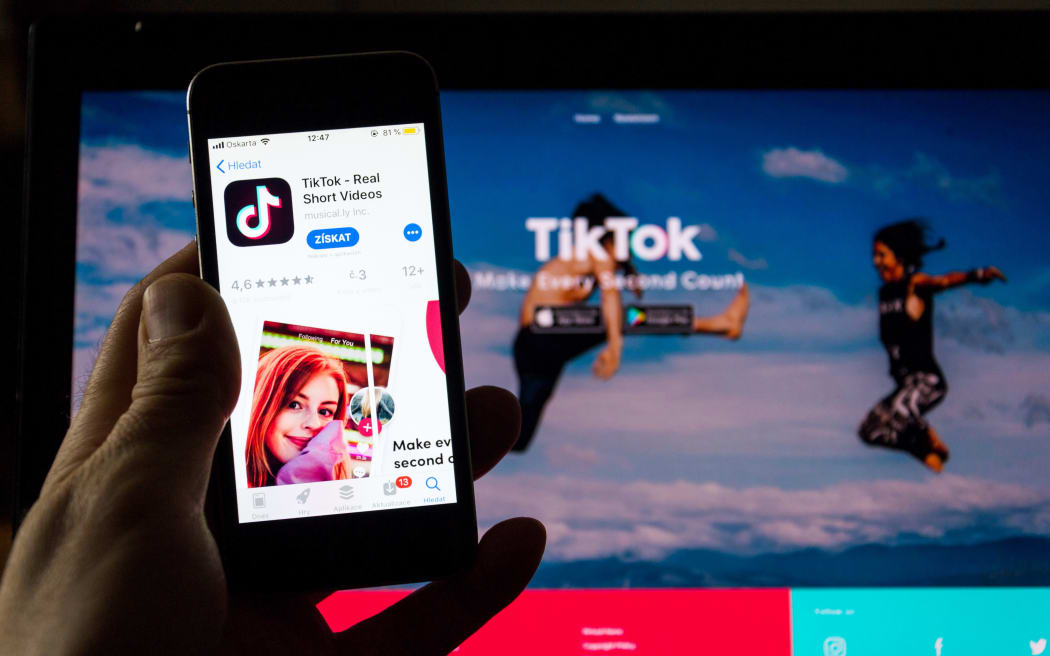
The rise of artificial intelligence systems like ChatGPT have already started to affect how many people work. Photo: FRANK HOERMANN / SVEN SIMON / DPA / AFP
By Meredith Turtis for the BBC
AI, return-to-office, the summer of strikes and more: both labourers and employers found themselves working through a rollercoaster of changes this year.
The work world has been a moving target for a while now. In 2023, some of the unresolved issues of the past three years settled, especially around the return to office. Yet evolving technology and a surge in organised labour meant plenty of new themes cropped up. They combined for a year of work unlike any other.
AI began its inevitable rise
The launch of ChatGPT on 30 November 2022 set the stage for a tidal wave of workplace changes in 2023. The impact of artificial intelligence on the labour force -- and the future of work as we know it - was perhaps the most high profile topic of the year. And for good reason.
Generative AI quickly came to infiltrate nearly every element of work, both for employers and workers. Recruiters began to see job applicants sending in materials written with ChatGPT; workers began to integrate the technology into their daily jobs - depending on it to the point that they found ways to secretly access the tools if they were banned.
One of the most ubiquitous worries - even existential concerns - among workers was whether AI would come for their jobs, especially as 2023 data from firms including Goldman Sachs and McKinsey and Company indicated replacement-by-robot may be imminent for many people.
The answer is still murky. Some experts say the first jobs on the generative AI chopping block may be entry-level roles, such as data entry or customer service. Yet emerging advances are also beginning to threaten higher-skilled knowledge work jobs, such as graphic designers or music producers, that workers mostly believed were "safe" for now.
It's not quite time to panic, though. First, many experts say there are jobs that will be difficult to automate outright - especially roles that require a human touch, sophisticated interpersonal relationships or out-of-the-box thinking.
And for positions that might be more vulnerable, experts also predict AI will end up as a supplementary technology, instead of an outright mechanism for replacement. At this point, AI is largely automating rote, repetitive tasks that can be a time-suck for workers, and could free up employees to do higher-level, more creative tasks. It also could push them to upskill, which may have long-term benefits.
At this point, experts recommend workers embrace AI, rather than fear it. The more people can understand the technology - both what it can and can't do - the more they'll be poised to work with it in ways that can advance them, and help them stay valuable to their employers.

ChatGPT launched on 30 November, 2022 which set the stage for a tidal wave of workplace changes in 2023. Photo: Jonathan Raa / NurPhoto / NurPhoto via AFP
Return-to-office became a reality
For many workers, the days of resisting return-to-office policies are over. After nearly three years of push-and-pull between employees and bosses, millions of workers are back in offices, at least partially - whether or not they want to be.
The cooling labour market has meant the power pendulum swung back towards leaders, who put into place return-to-office mandates that many workers have no choice but to follow.
While many companies have stuck with hybrid set-ups, others, such as Goldman Sachs and Disney, have leaned hard into this newfound power, recalling their employees four-to-five days per week. Others, including Amazon, have threatened workers who ignore these mandates - either denying them the opportunity to advance, or moving to terminate their employment entirely. Many companies who haven't fully returned yet have plans to do so in 2024.
If the switch seems jarring, it is. Since some offices began reopening in early 2021, workers have largely been able to make their own rules about whether they come in or not, despite years of heavy-handed pushes from leaders. Yet as job opportunities have tightened, it's far more difficult to snub these directives, since the Great Resignation is "over", and most workers can't easily hop into another job. And even for the new roles that are popping up, just a small percentage offer a fully remote set-up.
Yet experts are important to caveat that workers haven't entirely lost, even if they're back into their daily commute a few times a week.
The mainstreaming of hybrid set-ups means workers still have unprecedented flexibility and are unlikely to lose it entirely. Kastle Systems, which tracks employee access-card swipes for many businesses, has shown office attendance in 2023 is still a fraction of what it was pre-pandemic. Going forward, many jobs will have a hybrid schedule - a privilege formerly afforded to a select few, mostly senior employees.
Labour found its voice

Demonstrators hold placards calling for change for the crews of UK TV and films productions, as they protest on the opening night Gala Premiere of the film "Saltburn" during the 2023 BFI London Film Festival in London, on 4 October, 2023. Photo: Adrian Dennis / AFP
"Summer of strikes", "hot labour summer" - whatever the name, workers made their voices heard in 2023. Across the world, millions of people throughout many sectors organised, looking for better conditions and wages as well as career security for the future.
In the UK and US, healthcare workers conducted high-profile strikes after years of pandemic-era burnout and understaffing. Workers in transport, education and service joined them in the hundreds of thousands. But two US-based strikes particularly captured attention on the global stage.
On 2 May, the Writers Guild of America (WGA), representing more than 10,000 screenwriters, hit the picket line over issues including pay in the era of streaming-media dominance, and future protections against evolving AI technology. The Screen Actors Guild (Sag-Aftra) also went on strike on 14 July, with the two powerful unions standing in solidarity over shared concerns.
Then, on 14 September, workers at the three largest automakers in the country - GM, Ford and Stellantis - walked off the job. The members of the United Auto Workers Union (UAW) were not only looking for pay increases from the executives that make millions, but also seeking to secure their jobs in an industry that is increasingly moving towards EVs.
These disputes finally settled in the autumn, with all unions securing unprecedented gains, especially around wage boosts and job-futureproofing.
Experts say moments like this may be poised to continue. Not only have the successes of these labour movements inspired and empowered workers, but data also shows Gen Z is highly supportive of organised labour. As the next generation become a larger part of the workforce, they are likely to lead more pro-union pushes.
Work perks, redefined
Throughout the past few years, perks like ping-pong tables and kombucha on tap have faded as must-haves for worker satisfaction. The pandemic transformed what workers wanted from their employers, including new wellness benefits, or flexibility to work where and when they wished. Employers have largely listened - if not magnanimously, then at least out of the desire to attract and retain talent.
This year, perks have evolved even more, as workers across the globe have settled into their post-pandemic lives. Employers have begun to modernise their benefits suites as workers settled flexible work patterns, prioritised work-life balance and found themselves with different responsibilities at home.
Some companies are hoping to make jobs more fun, offering their workers multi-thousand-dollar travel stipends to unplug, or even doling out spot bonuses in the form of points redeemable for goods and services. Others are looking at things more tactically, offering perks such as pet-friendly offices and spaces for childcare - even donations to charity for each day in the office -- to incentivise workers back to their desks.
Perhaps this year's most notable shift, however, is the expansion of perks catering to an oft-overlooked group of workers: Gen X. An increasing number of employers are integrating benefits that help this "sandwich generation" - often caring for children and ageing parents at once - live life a healthier, more balanced life. Some of these new offerings include menopause support, healthcare screenings, eldercare and even "gran-ternity leave".
Experts say these benefits are a direct way to address worker happiness, and can pay off for employers, too; firms can become more appealing employers for older workers, who are often of leadership age. It's often a good deal for both parties.
Living on #worktok

File photo: Creators are turning to social media platforms like Tik Tok to talk about work culture. Photo: 123RF
Work culture found its way onto social media in a big way this year with #worktok. Creators across many platforms - particularly TikTok - invited users to get ready with them for their workdays, and toured them through their offices and daily grinds, often amassing millions of views. Sometimes they complained about their employers, and even quit on livestreams (accordingly, #quittok).
Perhaps most notable were the commentaries on work culture that came from this social media moment. The "lazy girl job", coined in May by 26-year-old Gabrielle Judge, particularly resonated with a group of workers who want to clock fewer hours and do less work (who wouldn't?). Her videos racked up hundreds of hundreds of thousands of views, and launched a tag with millions of impressions.
The workplace-talk shift to social media was inevitable, say experts. This is especially true as work and life increasingly bleed into each other, and young people in particular have not had the formative workplace interactions to build real world relationships.
"If you're working from home, you don't have that water cooler moment. Maybe if you come into a job during the pandemic, you might not have workmates who you're super close with," says Sara McCorquodale, the founder of UK-based influencer intelligence business CORQ. Along with creating community, she says, #WorkTok enables people to put a voice to one of the most important facets of their lives. It won't stop anytime soon.
Workers stayed put - but checked out
The Great Resignation defined the past few years in the workplace. It was a sign of worker empowerment; since 2020, millions of employees - especially in the US - left their jobs for new ones that made them happier, were more aligned with their values or improved the overall quality of their lives.
Yet as the labour market tightened this year amid mass layoffs and an uncertain economy, mid-2023 data began to show the turnover rate for US employees had normalised to pre-pandemic levels. The shift was so significant, that in August, economists declared the Great Resignation's finale.
For workers, this marked the end of an era in job mobility. And that's bred another problem: it's not that so many workers are out of jobs, per se - rather, lots are stuck in positions they may not want to be in, for lack of an alternative while openings are scarce.
Subsequently, employees are leaning out of their work. Think the "quiet quitting" trend of 2022, at the next level.
In January, a survey from Gallup showed employee engagement reached its lowest level since 2015; June 2023 Gallup data showed 59 percent of more than 120,000 global workers say they're not engaged at work. This mentality doesn't only lead to pesky dissatisfaction - it can also contribute to lower levels of personal wellbeing, says Jim Harter, chief scientist for workplace management and wellbeing at Gallup.
This leaves workers in a bad place, of course, but companies also stand to suffer, since productivity and morale falls off a cliff with disengagement. So, as workers check out, experts say it's up to leaders to light their employees' fires again. That means investing in their careers, supporting them with the same earnestness they did during the pandemic and working on building culture.
It may be tempting for employers to sit back if they're not fearful their employees will leave - but such a decision stands to hurt everyone.

File photo: Gallup data showed 59 percent of more than 120,000 global workers say they're not engaged at work. Photo: 123RF
A serious look at four-day workweeks
Four-day workweek trials kicked off in 2022, and spread across the globe in 2023, both in public and private sectors. In many cases, they have been successful; after the large-scale UK four-day workweek pilot from February, 92 percent of participating employers said they would continue with a shorter workweek following the programme. Nearly a third made the change permanent.
Workers have reported lower burnout and stress, and relished the time off. Companies have loved seeing their workers happier and more engaged, which has led to sustained productivity and employee retention. More companies are giving the four-day workweek a go, with others codifying the set-up in the coming months. Some firms are also giving the format a try with the hope that a shorter week may lure workers back into the office.
Are 32-hour workweeks imminent for all workers? As positive as the results have been - and even as more firms jump in - probably not.
For instance, not every company that's tried it has declared the experiment a resounding success; some leaders found cramming five days of work into four was stressful for employees, and sometimes failed customers. Other firms simply may not be set up to ever implement the change - whether due to the nature of their businesses, or because it's not a cultural fit.
Overall, the biggest workplace themes of the year shaped how, where and when we worked - and their impact will set the tone for 2024.
- This story was first published by the BBC






